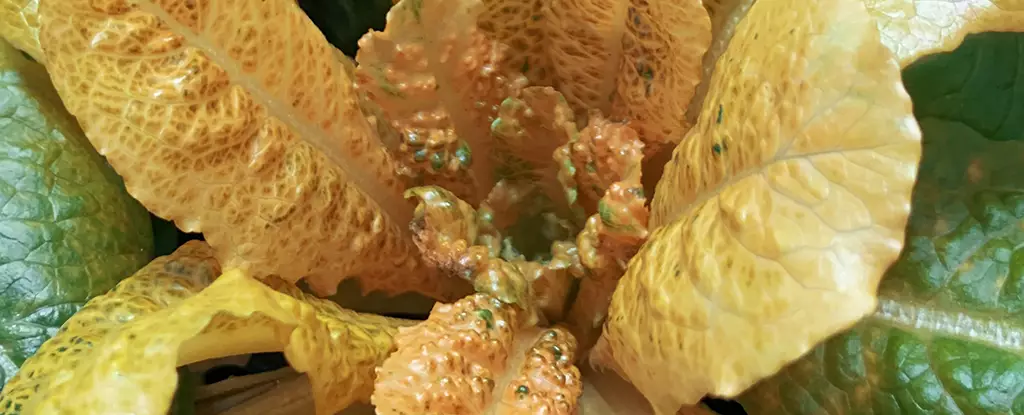In a groundbreaking endeavor, scientists have succeeded in developing a genetically engineered ‘golden lettuce’ enriched with a high concentration of vitamin A. This innovation serves not only to enhance the nutritional profile of lettuce but also provides a glimpse into the future possibilities for fortifying other vegetables. Vitamin A plays a crucial role in maintaining immune function, supporting vision, and fostering growth and development—making this development particularly promising for public health.
The research, spearheaded by a team from Valencia Polytechnic University (UPV) in Spain, involved intricate genetic modifications to boost levels of beta-carotene in lettuce (Lactuca sativa). Beta-carotene is the pigment responsible for the red-orange hue seen in various vegetables and is a precursor to vitamin A in the human body. Traditionally, leafy greens store carotenoids within chloroplasts—the organelles vital for photosynthesis. However, excessive accumulation of beta-carotene can disrupt chloroplast functionality, leading to plant stress or death.
The researchers faced a formidable challenge: enhancing beta-carotene levels without hindering the essential processes of photosynthesis. Manuel Rodríguez Concepción, a molecular biologist involved in the project, emphasized this delicate balance: “When too much or too little beta-carotene is produced in the chloroplasts, they stop functioning, and the leaves eventually die.” The team had to creatively maneuver biotechnological techniques while manipulating environmental conditions.
The scientists employed a multilayered strategy to circumvent the challenges presented by traditional storage mechanisms. By genetically modifying the lettuce to divert beta-carotene from chloroplasts to other parts of the cell, they successfully increased the nutrient’s accumulation in the cytosol—the fluid component of the leaf cells. In a novel twist, they introduced the gene for the bacterial enzyme crtB, which converts some chloroplasts into chromoplasts, specialized organelles that can store substantial amounts of pigments like beta-carotene.
In addition to genetic modifications, the researchers exposed the plants to high-intensity light treatments. This exposure promoted the formation of plastoglobules—small fatty storage units within plant cells—resulting in increased beta-carotene production. “Stimulating the formation and development of plastoglobules not only increases the accumulation of beta-carotene but also its bioaccessibility,” remarked Luca Morelli, another molecular biologist on the team.
Bioaccessibility—the proportion of a nutrient that is available for absorption in the gut—is particularly crucial when considering the effectiveness of this enhanced lettuce. With improved bioaccessibility, more beta-carotene can be transformed into vitamin A upon consumption, potentially amplifying health benefits. This discovery could serve as a vital intervention in global health, particularly given that a 2023 study identified hundreds of millions of individuals suffering from vitamin A deficiency, notably in developing regions.
The golden lettuce not only presents a novel approach to combating nutritional deficiencies but also highlights the broader implications of biotechnology in agricultural practices. As researchers explore further genetic modifications, the potential to enhance the nutritional profiles of a variety of crops could revolutionize food systems worldwide.
The golden lettuce represents a significant leap forward in the quest to improve global nutrition through scientific innovation. By melding genetic engineering with agricultural practices, scientists are paving the way for crops that carry enhanced health benefits. This could ultimately lead to healthier diets and improved public health, particularly in areas where nutrient deficiencies are prevalent. The bold strides made by the team at UPV are just the beginning of what may become a new chapter in agricultural biotechnology, promising to deliver vital nutrients to populations in need while also sparking more research into the genetic fortification of other vegetables. As we advance through the 21st century, the intersection of science and agriculture holds immense potential for combating dietary deficiencies and reshaping the future of food.


Leave a Reply